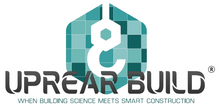Introduction
When it comes to construction, there are multiple types of products available in the market. You might have heard about prefab cabins and modified shipping containers. You may have also seen that big houses are transported in multiple different two or three segments, like oversized transportation. From two takes it from one place to another. All these things come with basic challenges, and transportation cost escalates like crazy. However, we are the only company currently in India that claims to make a boxable, which is all code compliances freight load. We can fold the structure in an 8 feet wide grid that can hold you on a regular. These are your trailers that are across India and anywhere in the world. From regular freight dimensions and that 20/8 structure, once we go there on site, it gets converted into a 20 feet by 25 feet. Okay, so it is a big box that you make within the matter of a couple of hours.
Advantages of Prefab and Modular Construction
1. Cost-effective
Prefab and modular construction offers cost-saving benefits compared to traditional construction methods. The standardized and factory-controlled production reduces material waste and labour costs. Moreover, the shortened construction time leads to lower financial expenses.
2. Time-efficient
Using prefab and modular construction techniques significantly speeds up the building process. With the components being manufactured off-site in a controlled environment, the construction time is reduced by up to 50%. This allows for faster project completion and quicker occupancy or utilization of the building.
3. Improved Quality
Factory-controlled production ensures higher quality standards in prefab and modular construction. The components are built to precise specifications, eliminating human errors often encountered in traditional construction. Additionally, the use of advanced technology and machinery ensures superior craftsmanship.
4. Flexibility and Versatility
Prefab and modular construction offer flexibility and versatility in design. The components can be easily customized and modified to meet specific requirements. Whether it's a residential building, commercial space, or even a temporary structure, prefab construction can adapt to various needs.
5. Sustainability
Prefab and modular constructions are eco-friendly options. The off-site manufacturing process generates less construction waste and reduces the environmental impact. Additionally, the materials used in prefab construction can be recycled, further minimizing the carbon footprint.
6. Mobility and Portability
Modified shipping containers in prefab construction provide mobility and portability. These containers can be easily transported to different locations, making them ideal for temporary or movable structures. Whether it's a pop-up store, a construction site office, or a remote housing solution, prefab construction offers convenient mobility.
7. Cost Predictability
With prefab and modular construction, there is greater cost predictability. The components are manufactured in a controlled environment, ensuring accurate estimation of material and labour costs. This eliminates the risk of unexpected expenses often associated with traditional construction.
8. Reduced Disruption and Noise
Prefab and modular constructions minimize disruption and noise during the building process. Since a significant portion of the construction work is done off-site, there is minimal disturbance to the surrounding environment and neighbouring properties. This makes prefab construction suitable for urban areas and sensitive locations.
9. Durability
Prefab and modular construction structures are designed to be durable and withstand various environmental conditions. The components are built to strict standards and undergo rigorous quality control checks. This ensures that the buildings are resilient and can withstand the test of time.
10. Scalability
Prefab and modular construction offer scalability options. Additional components can be easily added or removed to expand or downsize the building as needed. This flexibility allows for future modifications or expansions without extensive disruptions or costly renovations.
Conclusion
Prefab and modular constructions have revolutionized the building industry with their numerous advantages. From cost savings and time efficiency to improved quality and sustainability, these construction methods offer a viable alternative to traditional construction. With their flexibility, mobility, and scalability, prefab and modular structures can cater to a wide range of needs and applications. Whether it's a residential, commercial, or temporary structure, prefab construction provides a modern, efficient, and sustainable solution.




